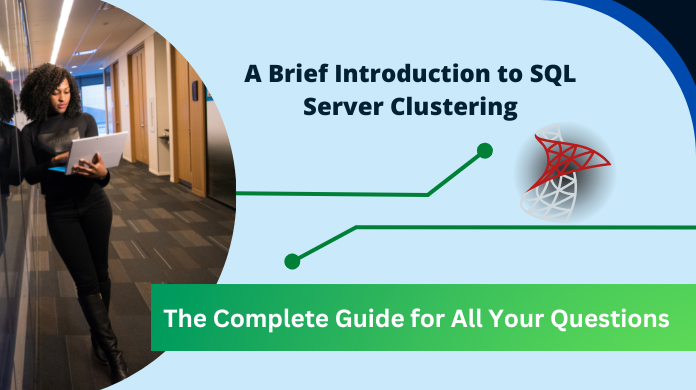A Brief Introduction to SQL Server Clustering

What is SQL Server Clustering? What does it provide? You will get to know more about this topic from this session. This session describes the entire clustering topic in detail with all the crucial aspects. Let us see what it means, why it is recommended and more.
Table of Content
SQL Server Clustering And Its Needs
SQL Server cluster is a collection of physical servers that has access to the shared storage. Those servers that are linked together through cluster services acts as one system and the connected servers are called “nodes”. The communication between the nodes takes place through private network and each server are independent, making them standalone. Apart from that, the failure of one will be replaced by the other and process is “failover”.
For the better availability of Server database, storing in server clusters is recommended. Moreover, Clustering improves availability of physical server hardware, Server instances or even OS.
How ‘failover’ happens?
Failover can be manually or automatically. Automatically indicates that the heartbeat of the server stopped. Manual has advantages, it is good when an event occurs that patches. Clustering is profitable, if it is implemented, then when the hardware failure occurs, databases will be applicable for the applications which are dependent. Mainly, clusters are created for removing the downtime linked with the failure of hardware.
There are many methods for SQL server cluster, according to the requirement and cheap. Let us see some of those techniques.
SQL Server Clustering Techniques
Shared disk:
This technique doesn’t require much cabling, but requires software named Distributed Lock Manager and rather it do not need many switches as well.
Mirrored disk:
In mirrored disks, each of the servers are having their own disks and is much better than ‘Shared-disk’. Apart that, using software applications, it mirrors whatever write is made in one server to another.
Shared nothing:
When we go further in SQL Server Clustering, we can say taht in this configuration, servers has their own disk and suppose if one server got failed then, there is a software which helps to migrate the ownership of disk to another. The availability level of the technique is same as of shared-disk.
The servers can be configured to active/active or active/passive. Let us check out the difference of these configurations to understand the clustering in SQL server in depth.
Active/Active Clustering
Here, two or more nodes are involved and each server has one instance of server, plays as backup for other. Suppose if one fails (node), all the instances will be handed over to other i.e. failover.
Active/Passive Clustering
Here, not the same server plays the role, one of the server acts as backup while the other runs the applications.
What Does Clustering Do?
- SQL Server Clustering improves the works easier. It helps in hardware failures since the instances can run on another node if one fails. Failover cluster helps to reduce the downtime.
- By failover clustering, applying patches for application when you change instance to another node is easy.
- Failover clusters give another tool in the troubleshooting toolkit.
What It Cannot Do?
- It is said that SQL Server clustering reduces downtime back to zero but, it actually doesn’t remove it.
- It doesn’t support load balancing; it avails to improve the uptime of instances only.
Summary
Before the creation of clusters, there is a need of proper planning. All the servers engaged in clustering should be configured to disk drives, controllers as well as network adapters. Hope you are able to get an idea on SQL Server clustering. It can’t be done all of a sudden, need careful and plenty of planning.
